Ford Revises the Ka+ for 2019
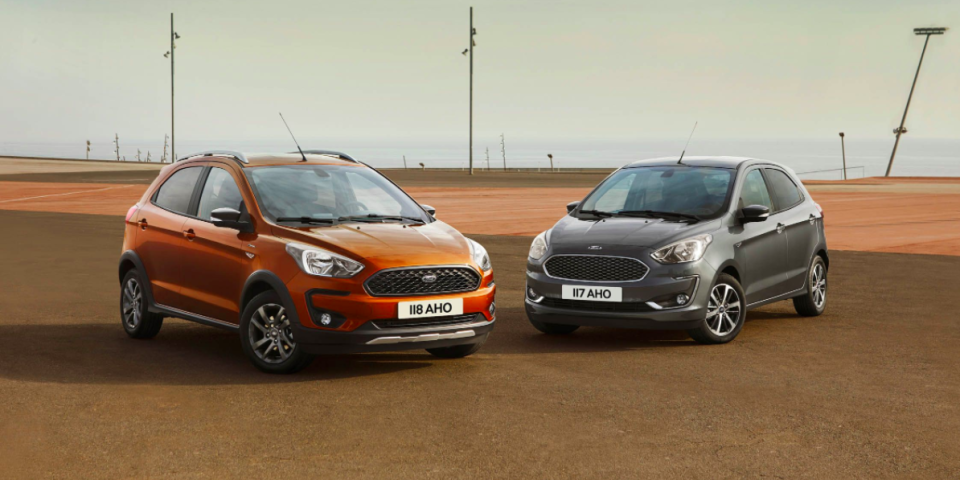
Recently updated, the revised Ford Ka+ and new Ka+ Active feature new powertrains, tech, and styling to keep pace with the rapidly advancing small-car segment. Ford claims to have sold more than 61,000 Ka+ vehicles in Europe since its late-2016 introduction and figures that the redesign and addition of the Ka+ Active model, which it calls a crossover, will widen its appeal and increase sales. It’s probably right.
Although both broke cover a few weeks ago, the 2018 Geneva motor show marks the pair’s official arrival. Offered in Essential and Ultimate trims, the refreshed Ka+ channels the current Ford design language by way of a trapezoidal mesh grille with a chrome surround and large swept-back headlamps. Standard foglamps and daylight running lights get chrome detailing, and restyled front and rear bumpers help keep things looking fresh.
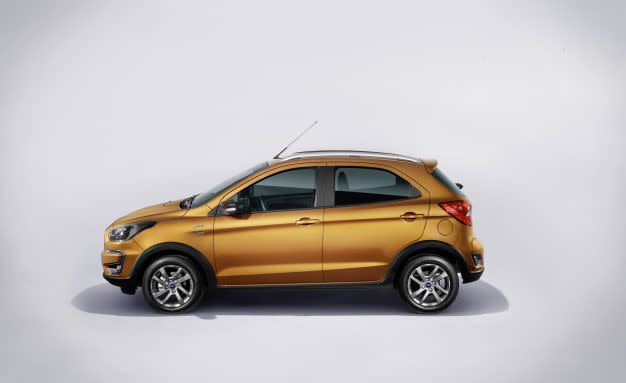
The Ka+ Active differentiates itself from the Ka+ with a nearly one-inch-higher ride height, additional rocker-panel and wheel-arch cladding, and tough-looking roof rails. The design of its 15-inch aluminum wheels and a special Canyon Ridge metallic exterior paint color are Active-only details. Inside, the Ka+ Active is dressed out with an Active-specific leather steering wheel, special fabric designs for the seats, and all-weather mats to protect both the cabin and cargo area from muddy boots and sporting gear.
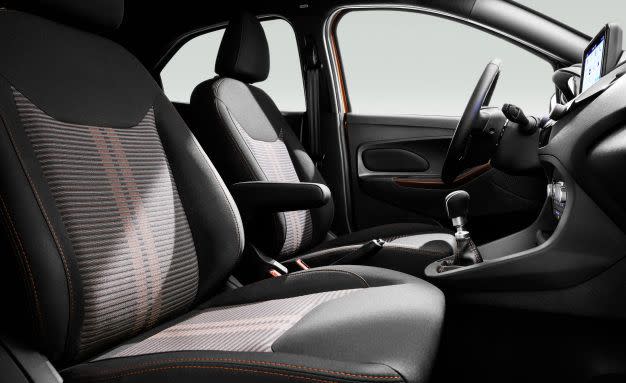
Suspension is by struts in front and a torsion-beam axle aft, while steel or aluminum wheels are available with 195/55R-15 tires; the Ka+ Active gets 185/60R-15 tires. Nearly 50 percent of the body of the Ka+ is made from high-strength steel, including the floor, front and rear chassis rails, front bumper and passenger door beams, and window pillars. Ford claims this contributes to improved crash performance.
With the refresh comes a choice of either a diesel or gasoline engine for both the Ka+ and Ka+ Active. The 94-hp turbo-diesel 1.5-liter inline-four is aimed at drivers who really pile on the miles, while the new 1.2-liter three-cylinder Ti-VCT (Twin independent Variable Camshaft Timing) gasoline engine is available in either 70- or 85-hp states of tune. The new engines feature stop/start functionality and meet the latest Euro Stage 6 emissions standards. Both engines are mated to a standard five-speed manual transmission.
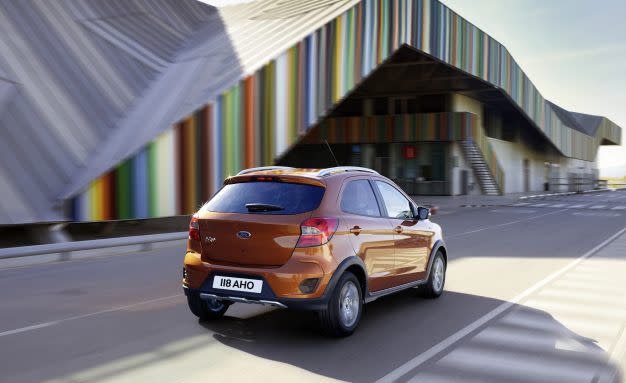
Ushered into service as the replacement for the outgoing 1.2-liter Duratec inline-three, the new 1.2-liter three-cylinder gas engine is derived from the same core architecture as the 1.5-liter EcoBoost unit that produces 197 horsepower in the upcoming Ford Fiesta ST. In its milder states of tune in these Ka+ models, it offers a reported 10 percent increase in torque from 1000 to 3000 rpm as well as an average 4 percent improvement in fuel efficiency. Engine noise and harshness are said to be reduced by an offset crankshaft design that eliminates the need for a balance shaft, a valvetrain designed for quieter operation, and an acoustic-isolation system that reduces the amount of engine noise entering the cabin.
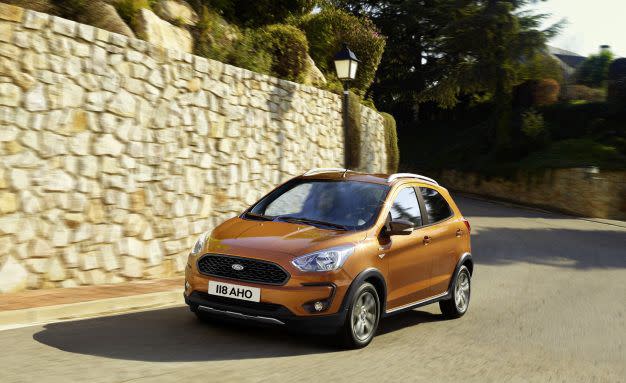
The 1.5-liter turbo-diesel gets some attention, too, with internal measures to increase refinement. It’s torquey for such a tiny beast, producing 158 lb-ft from 1750 to 2500 rpm. Fuel efficiency is improved with Ford’s Smart Regenerative Charging, which selectively engages the alternator when the vehicle is coasting and/or braking.
Since they’re one size smaller than the subcompact Fiesta, it’s a good bet that neither of these Ka+ models will make the trip to the United States. Should you find yourself across the pond when they go on sale later this year, however, you’ll need the equivalent of about $12,400 for the base model.
You Might Also Like

 Yahoo Autos
Yahoo Autos 